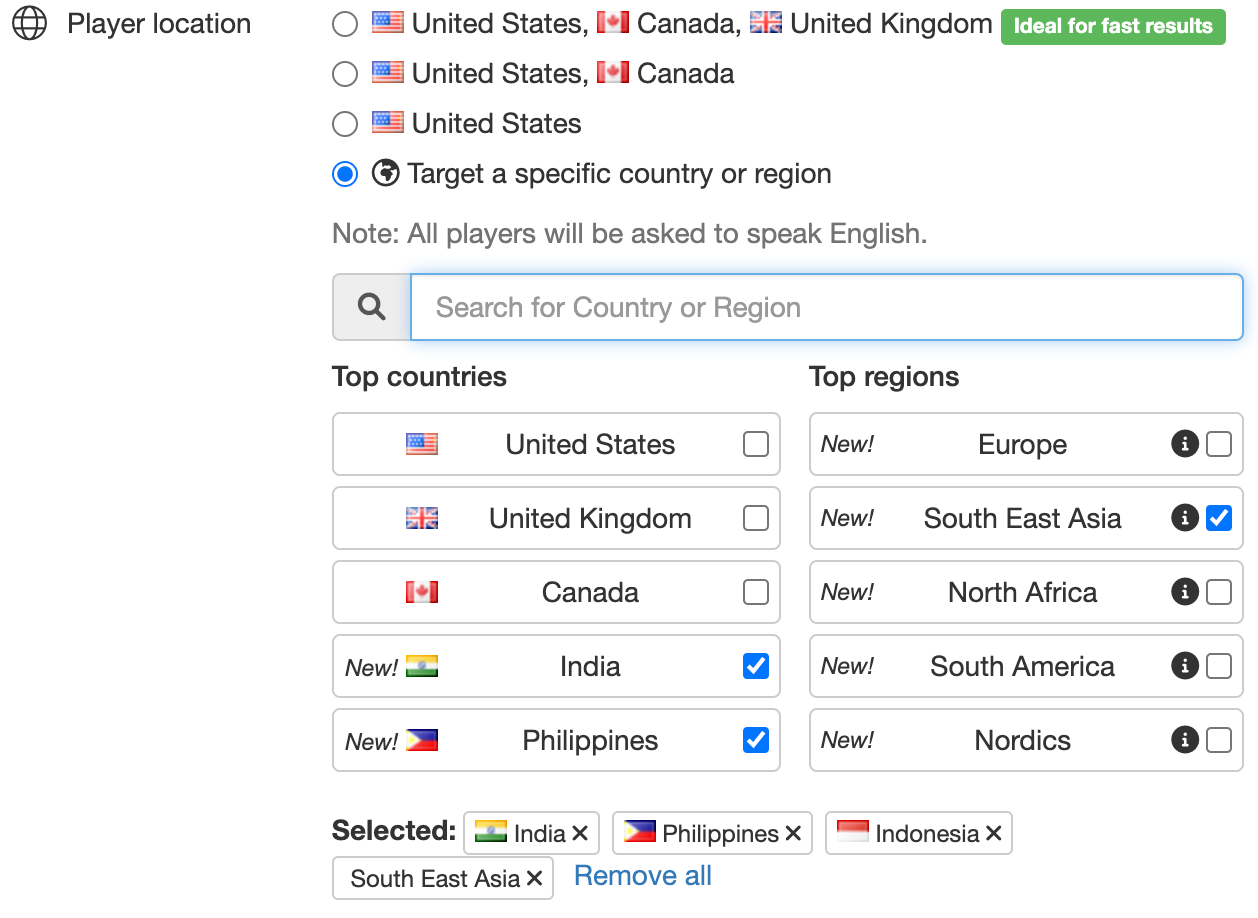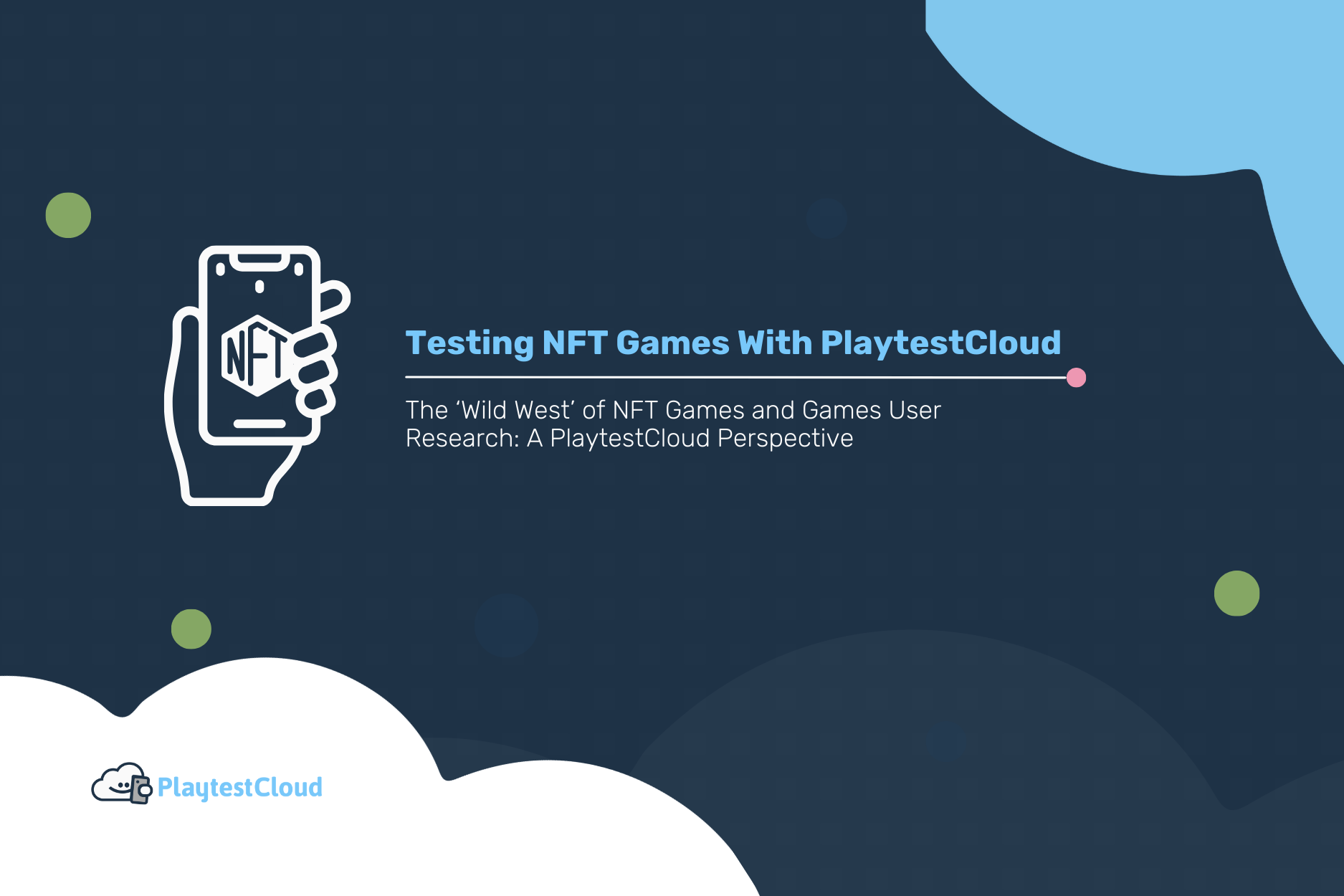Here at PlaytestCloud, we make it our business to be on the cutting edge of the latest gaming trends–which is why we’re so excited to witness the growing popularity of NFT games within the Web3 space.
But we want to know, why are people so attracted to NFT gaming? What kinds of players play NFT games? Most importantly, what does playtesting look like for NFT game studios?
Lucky for us, our Head of Operations Jack Dunne is well-immersed in the NFT gaming space, and he was all-too happy to share more about what he calls the ‘wild west’ of NFT games, and how it could impact the future of games user research.
Why We Love NFT Games
If you’re reading this, you may already know a little something about NFT games and Web3.
Basically these games operate based on the rules and mechanisms of blockchain technology. NFTs are (generally) characters or items that are playable in the game. For example, Axie Infinity is a PVP battle game where you can battle your NFTs against others for experience points after battle.
As a result, NFT games are quite often ‘play-to-earn’, where players buy-in as investors to start a new game. These investments then offer players an exciting opportunity to generate income through consistent game play.
What’s most exciting about NFT gaming - at least according to Jack - is the rise of deeply connected gaming communities within the Web3 space. Given the investor-status of many NFT games, Discord and Reddit communities have become a strong platform where gamers can directly interact with each other and the game creators.
While these communities are nothing new to the gaming world overall, with NFT gaming the game-oriented experiences these communities provide now include not only business, financial, and market-based discussions involving cryptocurrencies, but also critical discussions between NFT game makers and players.
Not that the crypto-focused nature of some communities would stop NFT and Web3 gamers from sharing the best ways to play. Veteran players even help low-income players “rent” NFTs, only to split the profits later!

The Pros and Cons to NFT and Web3 Gaming
However, “there’s some good and bad to this,” says Jack, who admits that while he is eager to see games being developed in different ways, and with new technologies, it is not uncommon to see the financial focus of these games (and gamers) take precedence over the game itself.
For example, as soon as a studio drops their NFTs, the incentive often is to simply make as much money as possible, and to cater to the wants and whims of their ‘investor’ players.
On the other hand, NFT game creators may promise their communities functions they cannot in the end deliver–resulting in investor drop-off and negative community interactions.
Because there are whole markets that may crop up around a single NFT or Web3 game, these types of added stress and financial pressure can certainly corrupt, or at least side-track, the gaming experience–especially considering the speculative nature of these gaming investments.
“Players need to be aware that their investment may not exist in six months to a year. They need to be ready to move fast, and ready to see their investment hit zero”, says Jack.
With the risk though, there’s a reward. Certainly, anyone at this point can get involved with a new NFT game, and NFT gaming models incentivize players to start playing early, since in-app purchases could end up more profitable in the long-term.
The involved nature of NFT and Web3 gaming community spaces is also overwhelmingly positive, and, as Jack explains, are moderated by people the game team employs. It’s incredible to see a rise in community managers who end up responsible for governing the interactions and discussions of more than 100K players at any given time, he says.
User Research Challenges for NFT Games
Of course, there are a few user research challenges that crop up as a result of the unique relationship between NFT gamers and NFT game creators, particularly where design is concerned.
“I learned from Heather Desurvire with User Behavioristics”, says Jack, “that you don’t want to let your players become your designers”.
The risk of this happening in NFT gaming is bigger due to the investor-player dynamic known to NFT games. Newer NFT game studios, who may not have a lot of research maturity, will for example go to their gaming community to ask what they think about A, B, and C.
While this type of outreach may be exciting and innovative, for now there’s a risk that these game creators will pivot based on whats trending, instead of prioritizing features that need to be fixed, or which are no longer working.
Often they forget that their user community doesn’t have a background in game design, and may not be leading game design down the right path. A combinatorial approach is preferred.
When this happens, game builders must also be wary about making enemies of those who have a financial investment in their game. If these player-investors don’t feel they’re being listened to, there’s no telling how this might affect the game’s viability.
Another challenge that Jack predicts will crop up in NFT games user research concerns NFT playtesters themselves. “There are not many NFT gamers in the US willing to playtest NFT games”, he says.
If NFT game creators can’t look to their community for playtesters, where can they go to find enough playtesters to make a difference to their game?
“Actually, NFT games are super popular in Asia and South East Asia, in especially places like the Philippines, Indonesia and India”, says Jack, hinting at how PlaytestCloud recently opened up their player panel to include these countries. “We wouldn’t be able to run NFT playtests without the great people from our Global Player Panel”.
How to Playtest NFT or Web3 Games
When it comes to playtesting your NFT game, Web3 game, or any game really, an important beginning step is knowing the players you want to target!
Communities and our internal research describe NFT gamers as being very knowledgeable about games and about crypto overall–though Jack admits there is a long-standing rivalry between some gamers and crypto-lovers (graphics cards, anyone?).
NFT and Web3 gamers are also players who enjoy and have experience playing hardcore games with a high cognitive load–so when you go to test your NFT or Web3 game, you’ll want to target about ten players who like to play games like Dota 2 or League of Legends.
Appreciation and usability testing are especially important when building an NFT or Web3 game; just make sure you’re not testing a lot with the same people–especially if you test within your existing community. Otherwise, you’ll end up with results that don’t exactly translate to the average first-person user experience, itself a critical GUR metric.
Since there is still a lot to learn about playtesting NFT games, Jack’s last recommendation is simply to make sure you seek out players who are already in areas where NFT gaming is most popular, like South East Asia.
“We’ve run tests with people out of that region for internal exploratory research, and have discovered all kinds of playtesters, whether they are still early in their journey, or are more advanced,” says Jack.

The ‘Wild West’ of NFT Gaming
What’s next for NFT gaming?
With major game studios coming in to create substantial NFT games and Web3 games, this is going to be an exciting time for games user research, says Jack. “There is a wild west characteristic…people are out looking for gold…I have never seen anything like this in my entire adult life!”
Not only are NFT gamers and game creators getting tons of guidance from special interest groups about the types of technology which support games creation, major thought leaders from firms like Naavik are watching closely and creating conversations as the space expands.
PlaytestCloud, never one to miss out on a party, has also been exploring new and exciting ways we can position our work within this budding games space. We want to partner with more game creators, NFT games researchers, Web3 games researchers, and we also want to encourage everyone to get involved in playtesting their NFT and Web3 games.
“Go join communities, get involved, or ask us anything about how to playtest NFT games,” encourages Jack.
In the meantime, we’re excited to see this thriving industry grow even bigger–and to play a part in NFT games development. If you have questions about NFT or Web3 game building, or want to playtest your NFT or Web3 game inside or outside of your gamer community, feel free to sign up for an account and start discussing with our team how we can playtest your NFT game.



